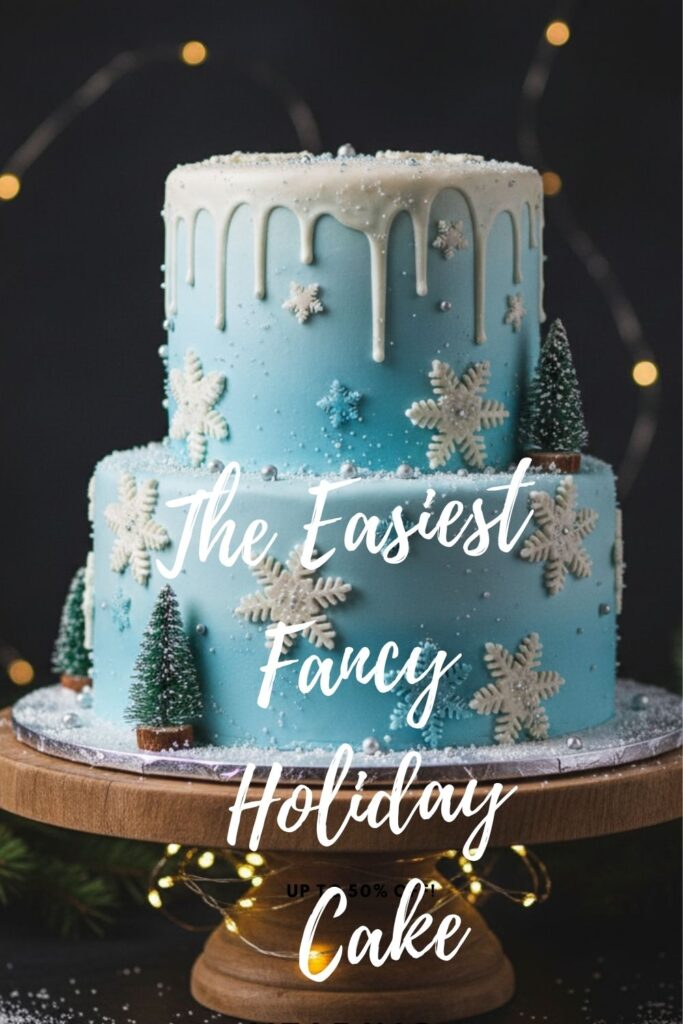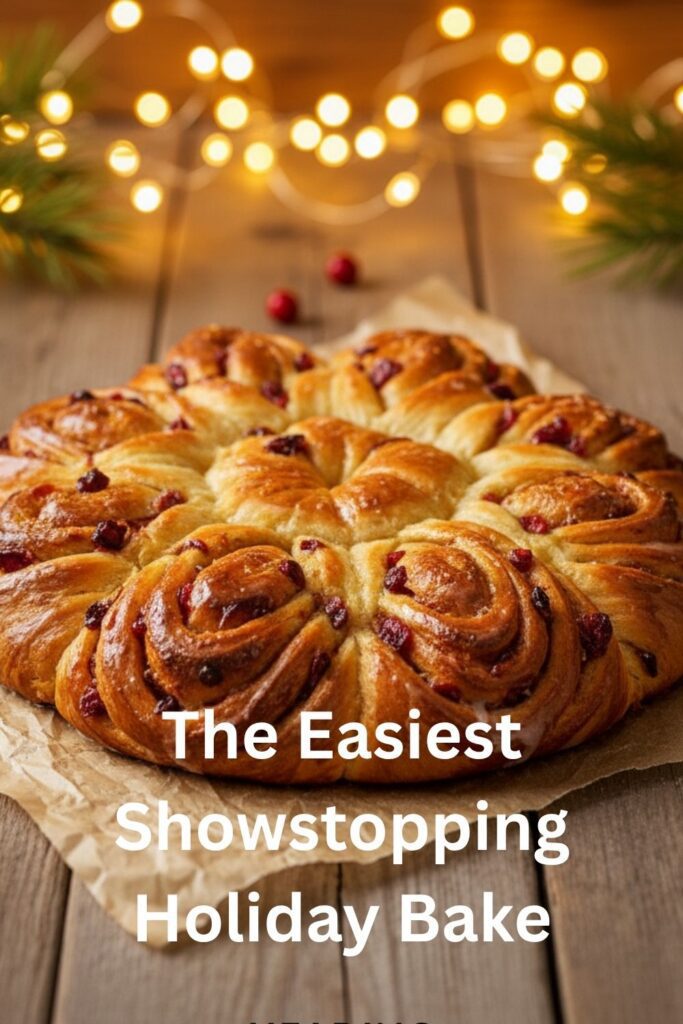The No-Fail Guide to Christmas Cookies That Don’t Look a Mess
Every year, it’s the same story. You see those impossibly perfect, intricately decorated Christmas cookies on social media and think, “This is my year. This year, my cookies will be masterpieces.” Fast forward three hours, and your kitchen is a warzone of powdered sugar, your hands are stained with food coloring, and your “reindeer” cookies look more like sad, abstract brown blobs.
But what if I told you there’s a way to achieve beautiful results without the tears and existential crisis? If you’re ready for some Christmas cookie decorating tips that are actually for real, mortal humans, then you have come to the right place. We’re going to master a foolproof icing and three simple, beginner-friendly techniques that will make your cookies look stunning. Seriously.
Why This is the Only Decorating Guide You’ll Ever Need
This isn’t just a recipe for icing; it’s a recipe for success and confidence. The star of our show is an incredibly easy, no-fail royal icing made with meringue powder. It’s stable, it’s easy to work with, and it dries with a beautiful hard finish, making your cookies perfect for stacking, packing, and gifting.
More importantly, the three decorating techniques we’re going to learn are all about maximum “wow” factor with minimum artistic skill required. We’re talking simple, elegant designs that are so easy, you’ll feel like a professional pastry chef. This is your official permission to stop being intimidated and start having fun.
The “Recipe” for Perfect Cookie Icing
This is your foundation for beautiful cookies. Let’s get the ingredients right.
- 1 lb (about 4 cups) Powdered Sugar: Sifted, to prevent lumps.
- 3 tbsp Meringue Powder: This is our magic ingredient! It replaces raw egg whites, making the icing safe, stable, and easy to work with.
- ½ cup (120ml) Warm Water: You may need a little more or less.
- 1 tsp Vanilla or Almond Extract: For flavor!
- Gel Food Coloring: Gel is a must! Liquid food coloring will make your icing watery.
And for Decorating, You’ll Need:
- Baked and Cooled Sugar Cookies: Cut into simple shapes like circles, stars, and trees. Make sure they are completely cool.
- Assorted Christmas Sprinkles: The more, the merrier.
Tools & Kitchen Gadgets Used
Having the right gear will make this process a joy instead of a struggle.
- Stand Mixer or Electric Hand Mixer: A stand mixer with the paddle attachment is best, but a hand mixer will absolutely work. This is non-negotiable for getting the right icing consistency.
- Piping Bags: Or sturdy Ziploc-style freezer bags in a pinch.
- Small Round Piping Tip (like a Wilton #2 or #3): Optional, as you can also just snip the end of the piping bag.
- Toothpicks or a Cookie Scribe: Your secret weapon for smoothing icing and creating designs.
- Small Bowls and Spoons: For mixing your different icing colors.
Step-by-Step Guide to Becoming a Cookie Artist
Ready to create some edible art? Let’s break it down into simple, manageable steps.
H3: Step 1: Make the No-Fail Royal Icing
- Combine and Mix: In the bowl of your stand mixer (or a large bowl with a hand mixer), combine the sifted powdered sugar and meringue powder. Give it a quick whisk to combine.
- Add Water and Beat: Pour in the warm water and vanilla extract. Beat on low speed until combined, then increase the speed to medium-high and beat for 5-7 minutes. The icing will become thick, glossy, and bright white, forming stiff peaks. This is your “piping consistency” icing.
H3: Step 2: Master Icing Consistency (This is the Secret!)
Royal icing has two main consistencies:
- Piping Consistency: This is the thick icing straight from your mixer. It’s perfect for outlining cookies and adding fine details.
- Flood Consistency: This is a thinner icing used to fill in the outlined areas. To get this, take some of your piping icing and add water, a tiny bit at a time (like, ½ teaspoon), stirring gently, until you reach the right consistency.
- The 10-Second Rule: The perfect flood consistency is achieved when you can drag a knife through the surface of the icing and the line completely disappears in about 10-15 seconds.
H3: Step 3: Let’s Decorate! (The Fun Part)
First, divide your icing into small bowls and use gel food coloring to create your desired festive colors. Put your thick, piping consistency icing into a piping bag for outlining.
Technique #1: The Classic Flood & Sprinkle (Easiest Ever)
- Outline: Use your piping consistency icing to draw an outline around the edge of your cookie. This creates a “dam” to hold in the flood icing.
- Flood: Use your thinner, flood consistency icing to fill in the area inside your outline. Use a toothpick to guide the icing into any corners and to pop any air bubbles.
- Sprinkle Immediately! While the flood icing is still wet, go wild with your sprinkles. The icing acts like glue. Let the cookies dry completely.
Technique #2: Wet-on-Wet Polka Dots (Looks Fancy, Is Not)
- Flood the Base: Outline and flood your cookie with your base color (like white). Do not let it dry.
- Add the Dots: Immediately take a piping bag filled with a different color of flood-consistency icing (like red) and pipe small dots directly onto the wet base. The dots will magically sink into the base, creating a perfectly smooth, seamless polka dot pattern.
Technique #3: The Marbled Christmas Tree (The Showstopper)
- Flood the Tree: Outline and flood a tree-shaped cookie with green flood icing. Work quickly!
- Pipe the Lines: Immediately take a piping bag of white flood icing and pipe several horizontal lines across the wet green icing.
- Create the Magic: Take a toothpick and, starting from the top of the tree, drag it straight down through the center of the white lines. Clean the toothpick, and drag it up from the bottom in between your first line. Repeat across the cookie. This will create a beautiful “feathered” or marbled pattern that looks incredibly intricate.
Calories & Nutritional Info
It’s sugar. On top of a cookie made of butter and sugar.
- Serving Size: One beautifully decorated cookie.
- Nutritional Value: Pure, unadulterated holiday joy.
- Active Ingredient: Magic.
(Disclaimer: The main ingredient is sugar. If you are concerned about the nutritional value of royal icing, you may have missed the point of Christmas cookies.)
Common Mistakes to Avoid (So Your Cookies Don’t Look Sad)
Let’s sidestep these beginner blunders.
- Using Liquid Food Coloring: Liquid food coloring will add too much moisture and ruin the consistency of your icing, making it runny. You must use gel food coloring for vibrant colors without a watery mess.
- A Runny Flood Icing: If your flood icing is too thin (the line disappears in 2 seconds), it will run right over your outline dam and drip off the sides of the cookie. Add your water in tiny increments until you hit that perfect 10-15 second consistency.
- Waiting Too Long: Royal icing starts to form a crust very quickly. If you’re doing wet-on-wet designs or adding sprinkles, you must do it immediately after you flood the cookie, while the surface is still wet and glossy.
- Not Letting Them Dry: Royal icing needs several hours (or even overnight) to dry completely hard. If you try to stack or bag them too soon, you will have a smudged, heartbreaking mess. Be patient!
Variations & Customizations
Once you master the basics, the possibilities are endless!
- Flavor Your Icing: Instead of vanilla or almond, try adding a little peppermint extract to your white icing or orange extract to your green icing for a fun flavor twist.
- Get Sparkly: After flooding your cookies, sprinkle them with edible glitter or sanding sugar for a beautiful, sparkly, snow-kissed effect.
- The Minimalist Approach: Don’t have time to flood? Just use your thicker, piping consistency icing to draw simple designs—like snowflakes or swirls—directly onto the plain cookie. It’s elegant and fast.
FAQ: Your Christmas Cookie Questions, Answered
Let’s clear up some common icing mysteries.
1. What is meringue powder, and where do I find it?
Meringue powder is a pasteurized, dried egg white product. It’s a safe, easy, and stable alternative to using raw egg whites. You can find it in the baking aisle of most craft stores (like Michaels) or major grocery stores, and definitely online.
2. How long does it take for royal icing to dry completely?
It depends on the humidity and the thickness of your icing, but you should plan for at least 6-8 hours, or preferably overnight, for the icing to dry completely hard to the touch.
3. Can I make royal icing without a mixer?
You can, but it will be a serious arm workout. You need to beat it for a long time to get the right stiff, glossy consistency. An electric mixer is highly, highly recommended.
4. How do I store royal icing?
Store leftover icing in an airtight container with a piece of plastic wrap pressed directly against the surface of the icing to prevent a crust from forming. It will last in the fridge for up to a week. You may need to re-whip it briefly before using.
5. My piping bag exploded! What did I do wrong?
You probably overfilled it, or your icing was a little too thick. Only fill your piping bags about halfway full. If your piping consistency icing is too stiff to pipe easily, you can mix in a tiny drop of water to loosen it slightly.
6. Can I use this icing on gingerbread cookies?
Yes! This is the perfect icing for decorating sturdy gingerbread or sugar cookies.
7. Why is my icing separating or looking weird?
This can sometimes happen if your icing has been sitting for a while, especially if it has a lot of food coloring. Just give it a good stir to bring it back together before you use it.
Final Thoughts
You are now officially a cookie decorating badass. You’ve learned the secrets to a no-fail icing and three simple techniques that will make your creations the star of the cookie exchange. Remember, the point of this is to have fun. So put on some holiday tunes, embrace the glorious mess, and create some beautiful (and delicious!) edible art. And if a few of them turn out a little wonky? Well, those are just for quality control. 😉







